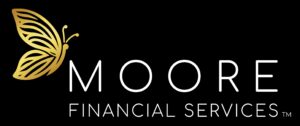
Examples of this on a small scale would be local author events at small bookstores and at larger chains. On a greater scale, appearances on major TV programs, like Oprah or Good Morning America, and Radio Talk shows are used to promote their works. By adding a personal touch and a human face to the public, the audience is further engaged with the topic discussion. On more product oriented examples (as if books are not products), infomercials are a prime example of public speaking to increase value. Using studio audiences and interaction lends credibility to product claims. When an audience can see a product being used, with witnesses present, they are subconsciously more apt to believe the claims. Feedback from the “common man” or a regular person like themselves allows a consumer to feel more connected to a product. Furthermore, well known spokespeople add comfortability to the mix. People tend to feel more at ease, and less skeptical, when they see or hear information from a known source. When Publisher’s Clearing House chose Ed McMahon as their spokesperson years ago, he was well known and popular from the Tonight Show.
One way of connecting with your audience is organizing ideas in appealing ways. In fact, organization, including the overall ordering of ideas in your message, is very important to success in public speaking. Although there are several organizational techniques, a simple approach can be used in most cases. This article talks about a simple approach to organizing your ideas in public speaking as well as some speaking tips to get the most out of this approach. 1. Preparing the audience for your main message. 2. Delivering your main message. 3. Providing a brief recap. Each of these steps centers on the orderly flow of ideas from one part to another. Certain speaking tips allow you to achieve this effect. Telling your audience where you are going allows them to have a smoother journey. Ask questions or mention facts about your topic then explain how your message addresses them. Your title should suggest the main point, but not disclose it.
In public speaking, using your voice effectively can help you communicate your message clearly to your audience. Voice is an important component of your non-verbal communications, or body language, and can express a wide range of meaning and emotion. Your volume should be loud enough so that people can hear you easily. How loud depends on the room size, the number of people in the audience, whether or not you are using a microphone, the acoustics, etc. If you have the opportunity to use a microphone, use it. As long as it is working properly and you have practiced using it, a microphone can make it easier for the audience to hear you. You have to speak slowly enough so your audience can understand and digest what you are saying – how slowly is “slowly enough” depends on your audience. For example, if you’re presenting in a language that is not native to the audience or if you’re presenting new, complex information, you should speak slower than you usually do. Record yourself speaking or have someone listen to you practicing the presentation, so you can get another perspective on whether you’re speaking too fast to be understood.
When you talk of public speaking, a lot of individuals know that it is one of the most feared activities. Hence, it is not discriminating anyone from being struck by sudden nervousness whenever they are asked to face the crowd or stand in the center of the stage. Practice is a proven and tested method for conquering fear of public speaking. However, what people don’t know is there is another way to ease your nervousness and not eat you up while you are talking to your audience. Breathing can help you make yourself comfortable before and during your presentation. You can start by learning to breathe with the support of your diaphragm. This may sound simple but you might be shocked about the truth of the matter. Go through the rest of this article so you will know the secrets to getting rid or nervousness. If you try to stand and face the mirror without your shirt on, take a deep breathe. Now answer some of these questions after doing it, did your shoulders rise? What happened to your chest, did it throw out?
Most of us have suffered from responses to anxiety of public speaking. And we may become so ill we may think we are actually coming down with something when in fact it is nothing more than anxiety triggered by the fear of public speaking. There are many physical symptoms of anxiety. You may perspire or downright sweat t when you are standing on stage. If you are delivering your message to a large audience environment the lights in general may be intense and may make you perspire. I’ve seen people who are presenting who were so nervous and so drenched with perspiration that it looks as if their clothes just came out of the washer. One way to combat excessive sweating before and while presenting is to cool off before you go on stage. Use a cooling rag on your neck. Stay away from caffeine and chocolate and don’t drink any hot drinks before you go on either.
If you have a list of audiences to whom you’ve spoken previously, you will want to list some of those under the heading “Satisfied Clients”, and spread 2 – 3 testimonials from other speaking gigs throughout the sheet. 5. Create a speaking link on your website and have the presentations you’ve outlined available on your site, as well as your speaker one sheet, and a separate link with your photo and bio. Many association program chairs will want to “check you out” online, even though you’re offering to speak to them free of charge, so give them the opportunity to read all about your speaking topics on your website. 6. Now you need to find audiences filled with your target market. To start locally, approach the program chairs of professional associations to which you already belong and see if you can get on their speaking schedule. Your local library or Chamber of Commerce may have a current list of professional associations in your area which you can also approach.
